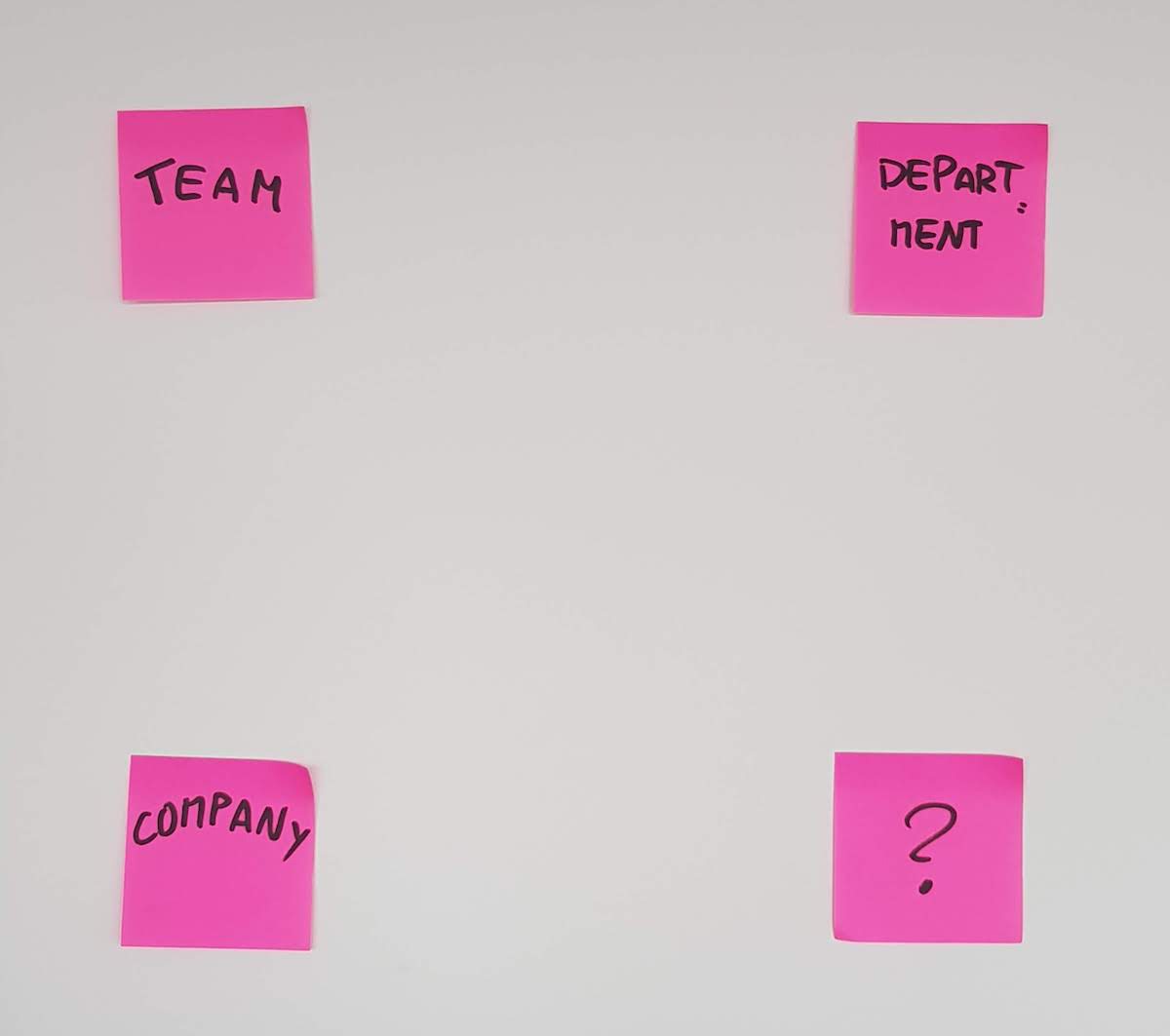Yesterday night I was biking home from work after a great Friday, happy to have taken part to a fun pub quiz with colleagues, when an idea flashed into my mind for a new retrospective format.
Then, in spite of all official safety rules and unspoken guidelines for reasonable and secure bike riding, I pulled out my phone and recorded my thoughts.
So here we go, I present to you a brand new (to my knowledge) way of doing retrospective with Agile teams, trademarked by me under the name of: The Battleship retrospective
Structure
The structure of this retrospective is rather simple, it goes on for 3 phases:
- Rough-cut
- Sonar
- Henschel
Phase 1: Rough-cut
In the rough-cut phase the Scrum Master sticks on the wall/board 4 different sticky notes in a square shape, each with one of the following areas written on it:
- Team
- Department
- Company
- ?

Then each member of the team present at the retrospective is invited to secretly vote for one of the areas they want to discuss something about, which can be positive as well as negative.
If somebody wants to discuss something that does not belong to either of the first three areas they will vote for the ? area, specifying also what this area is.
For example if one member of the team wants to discuss about the sales department of the company they will write in their secret vote ? -> Sales department
Once all members of the team secretly voted, the Scrum Master collects the votes and sticks them under the corresponding area. At this point, before proceeding to the next phase, and in light of the possible new areas appeared, the Scrum Master asks if anybody wants to change their preference. Note that people do not need to express what they choose, but just if they want to change, and if so which new area they prefer to talk about.
Once all preferences are confirmed the Scrum Master removes all areas that did not get any vote and proceeds to the next phase only with the remaining areas.
Phase 2: Sonar
In the sonar phase each member of the team is asked to write down, in secret, topics they want to talk about related only to the areas present on the wall/board.
Therefore even though someone choose the macro-area Team for example, they can still write down topics they like to discuss for other areas brought to this phase.
Note that there is no minimum number of topics a person should write per area, therefore it’s completely ok not to write anything or to write for all areas
Once everybody has written down all they would like to discuss, the Scrum Master collects the notes and sticks them under the corresponding area, making sure to cluster together duplicate or similar topics.
Phase 3: Henschel
This phase is named after the first and most famous anti-ship missile first used in WW2; which only purpose is to justify the name of the retrospective… A-HA!
In the Henschel phase the Scrum Master facilitates the discussion among the team members of the topics that appeared more often from the previous phase.
The idea is to discuss those topics, positive or negative as they are, and use the time for both realising the good work done and gain confidence, as well as possibly come up with action points or solutions to negative points that may have appeared.
Depending on the time the Scrum Master picked for the retrospective perhaps not all topics can be properly discussed, that’s why it ‘s better to start from the topics that got multiple notes written about them.
Here you have it, let me know what you think about that, how it works for you in practice, possible suggestions or modifications you have in mind or even if I inadvertently copied an already existing format (upsie)

Leave a Comment